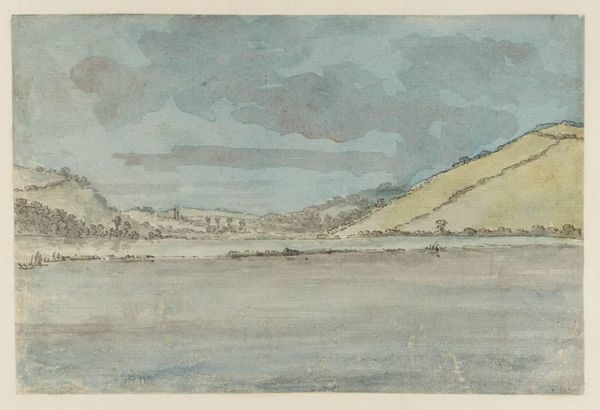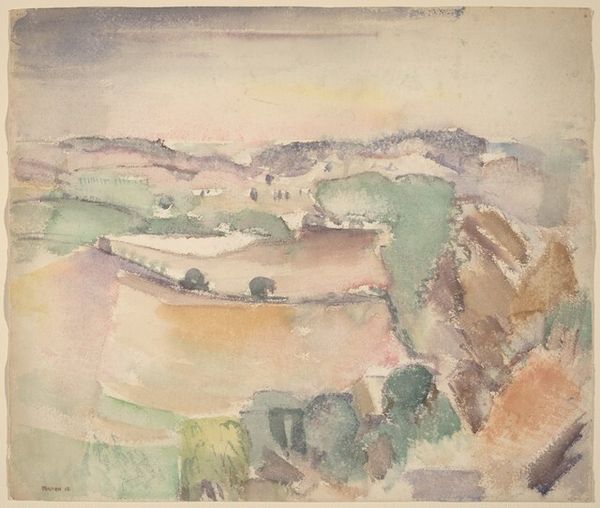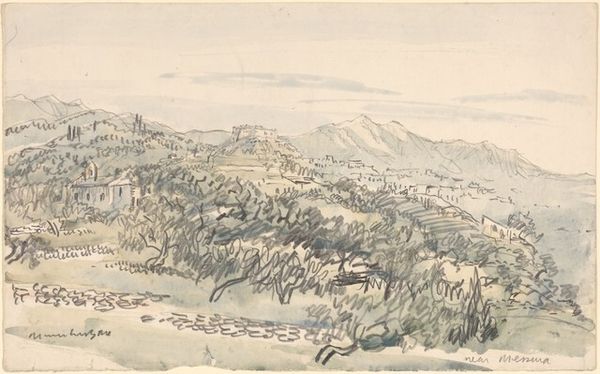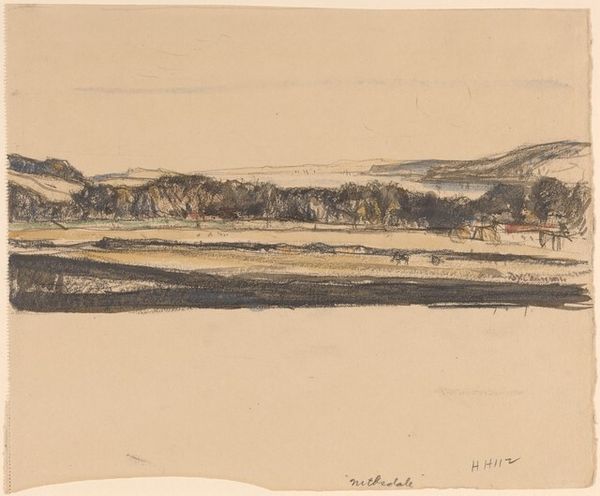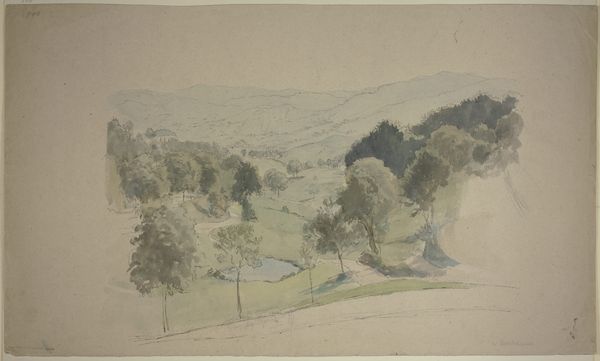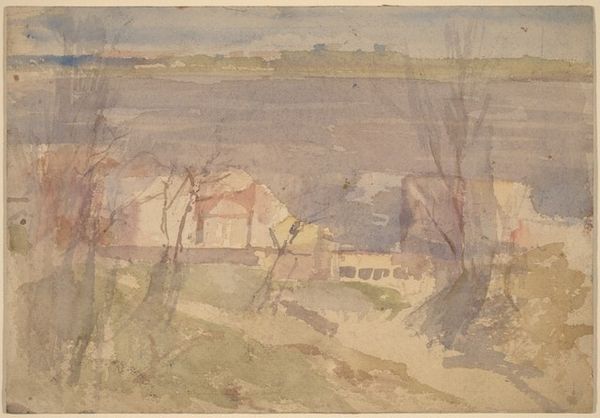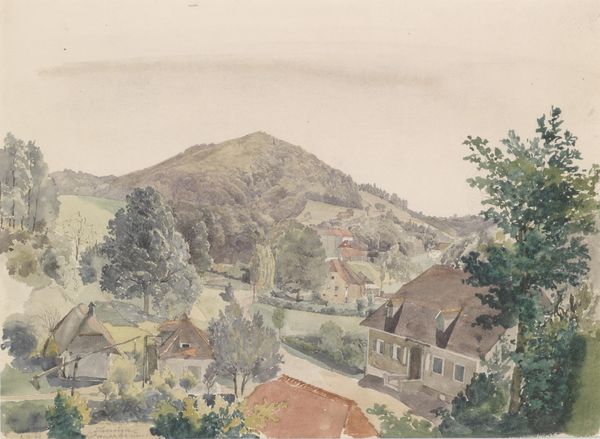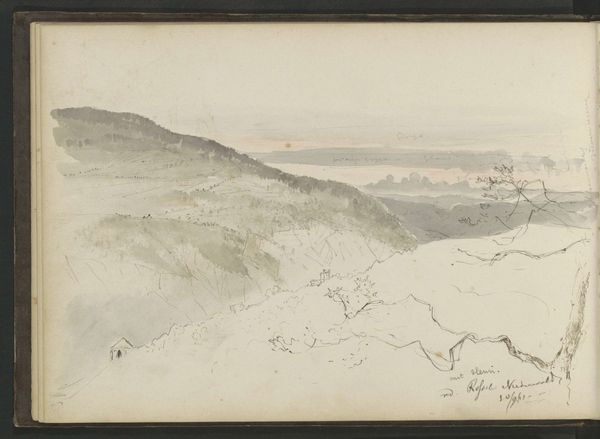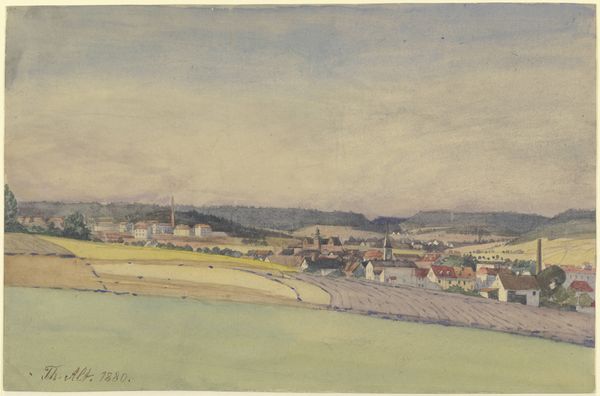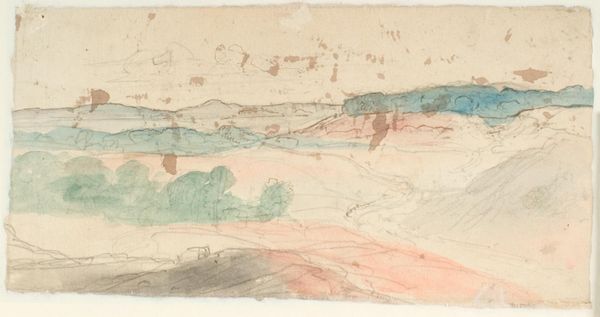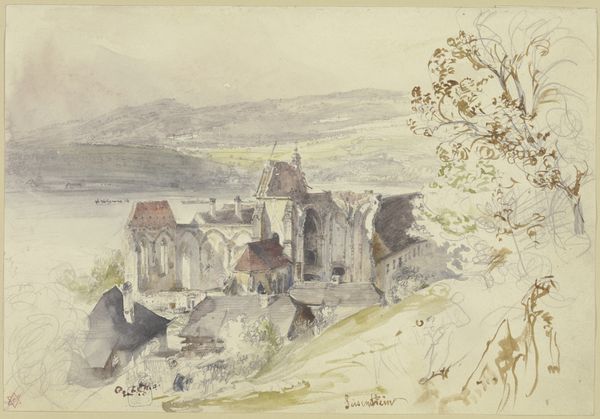
Dimensions: overall: 27.7 x 37.3 cm (10 7/8 x 14 11/16 in.)
Copyright: National Gallery of Art: CC0 1.0
Editor: So, here we have John Marin’s "France" from 1909, a watercolor painting that evokes a certain tranquility with its muted colors and soft washes. What catches your eye when you look at this landscape? Curator: Well, beyond the immediate visual impression, I'm drawn to consider the labor embedded within. Marin’s swift application of watercolor almost disguises the deliberate act of portraying land that is invariably worked, cultivated. What can the raw materials of this artwork—pigments, paper, water—tell us about the economics of art production at that time? Editor: That’s an interesting perspective! I was more focused on the stylistic elements, the impressionistic brushstrokes and the almost abstract rendering of the fields. Curator: And shouldn't we ask whose labor produced those brushes, the pigments, the very paper Marin worked on? Examining these details situates the art object within a larger network of production. Consider, for example, how the availability of mass-produced art supplies democratized art-making but simultaneously altered traditional craft practices. How does this impact our reading of a modernist landscape? Editor: I see what you mean. It's not just about the artistic vision, but also the whole support system that made it possible. Were there specific advancements in watercolor production at that time? Curator: Precisely! The development and wider distribution of manufactured watercolors definitely fueled artistic experimentation. Think about the social context of this piece too; depicting France likely implies Marin's access to resources for travel and his choice of subject as potentially consumable for a certain demographic. How might a painting of an industrial scene, made with the same tools, express a totally different perspective of labor? Editor: That makes me see it in a completely different light. Thanks for sharing this take! I will look into this kind of socioeconomic insight for the future exhibits I design. Curator: Indeed! It reminds us that even landscapes are deeply rooted in material conditions and labor. I will look closer at how artists portray industrial settings next.
Comments
No comments
Be the first to comment and join the conversation on the ultimate creative platform.
